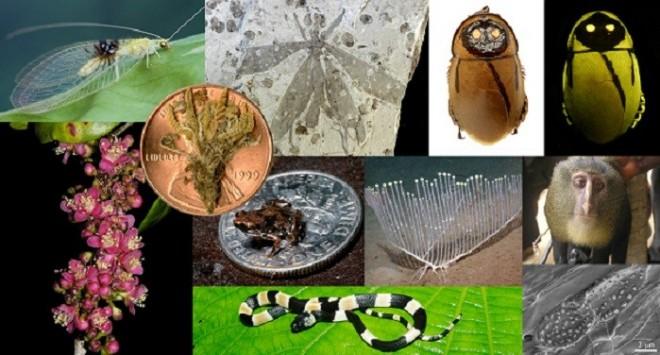
Scientists from the International Institute for Species Exploration at Arizona State University (ASU), US, have announced a list of top 10 species of 2012.
The announcement of the list coincides the anniversary of the birth of Carolus Linnaeus - the 18th century Swedish botanist responsible for the modern system of scientific names and classifications. This is the sixth time that the University has come up with the annual top 10 new species list.
According to scientists, there is an estimation of 10 to 12 million living species (excluding most of the microbial world) across the globe. However, only about 2 million species have been identified.
A committee of international scientists chose the top 10 newly-identified species from a list of more than 140 nominated species. Researchers identified the new species at a rate of about 18,000 a year, but they believe they need to pick up pace in identifying the species.
"For decades, we have averaged 18,000 species discoveries per year which seemed reasonable before the biodiversity crisis. Now, knowing that millions of species may not survive the 21st century, it is time to pick up the pace," Quentin Wheeler, founding director of the International Institute for Species Exploration at ASU, said in a statement.
"We are calling for a NASA-like mission to discover 10 million species in the next 50 years. This would lead to discovering countless options for a more sustainable future while securing evidence of the origins of the biosphere," Wheeler said.
Here is the list of top 10 species from 2012 [To view Complete details of the species and the pictures, click here]
Lilliputian Violet
Viola lilliputana
Country: Peru
Lilliputian violet is among the smallest violets in the world. It grows only about 1 centimeter tall. Though the first specimens of the species were collected in the 1960s, they were not described until 2012. They are named after the little people on the island of Lilliput in Jonathan Swift's "Gulliver's Travels."
Lyre Sponge
Chondrocladia lyra
Country: NE Pacific Ocean; USA: California
The harp or lyre-shaped, carnivorous sponge were discovered in deep waters of the northeast Pacific Ocean, off the coast of California. Their unusual shape helps in capturing planktonic prey.
Lesula Monkey
Cercopithecus lomamiensis
Country: Democratic Republic of the Congo (DRC)
The lesula monkey is the second species of monkey to have been discovered in Africa over the past 28 years. Researchers made their first contact with the monkey when they found a juvenile female held as captive by a primary school director in 2007.
Scientists monitored the monkey and identified it to be new species that has never been described earlier. The shy lesula has human-like eyes.
Snail-eating snake
Sibon noalamina
Country: Panama
A new species of snail-eating snake was discovered in the highland rainforests of western Panama. The snake is harmless, but it defends itself by imitating the alternating dark and light rings of venomous coral snakes.
Fungus Ochroconis anomala
Country: France
The fungus, Ochroconis anomala, is staining the ancient art on the walls of Lascaux Cave in France. The fungus is causing a major concern for the conservation of precious rock art at the site that dates back to the Upper Paleolithic.
World's Smallest Vertebrate - Tiny Frog
Paedophryne amanuensis
Country: New Guinea
This tiny frog is the smallest known vertebrate in the world. They are as small as 7 millimeters and took over as the "smallest living vertebrate" from a tiny Southeast Asian cyprinid fish, which claimed the record in 2006.
Endangered Forest
Eugenia petrikensis
Country: Madagascar
The new species Eugenia petrikensis is a shrub that grows to 2 meters. The shrub was once found in abundance in Madagascar, but has now been reduced to isolated, vestigial fragments due to pressure from human populations.
Glow-in-the-dark cockroach
Lucihormetica luckae
Country: Ecuador
Lucihormetica luckae species glows in the dark. The species might be endangered or possibly already extinct.
Green lacewing
Semachrysa jade
Country: Malaysia
Malaysian photographe Hock Ping Guek took a picture of a green lacewing with dark markings at the base of its wings in a park near Kuala Lumpur. He posted the image on flickr, which led to identifying the lacewing as a new species.
Hangingfly fossil
Juracimbrophlebia ginkgofolia
Country: China
A new fossil species, Juracimbrophlebia ginkgofolia, was found along with preserved leaves of a gingko-like tree, Yimaia capituliformis, in Middle Jurassic deposits in China.

















